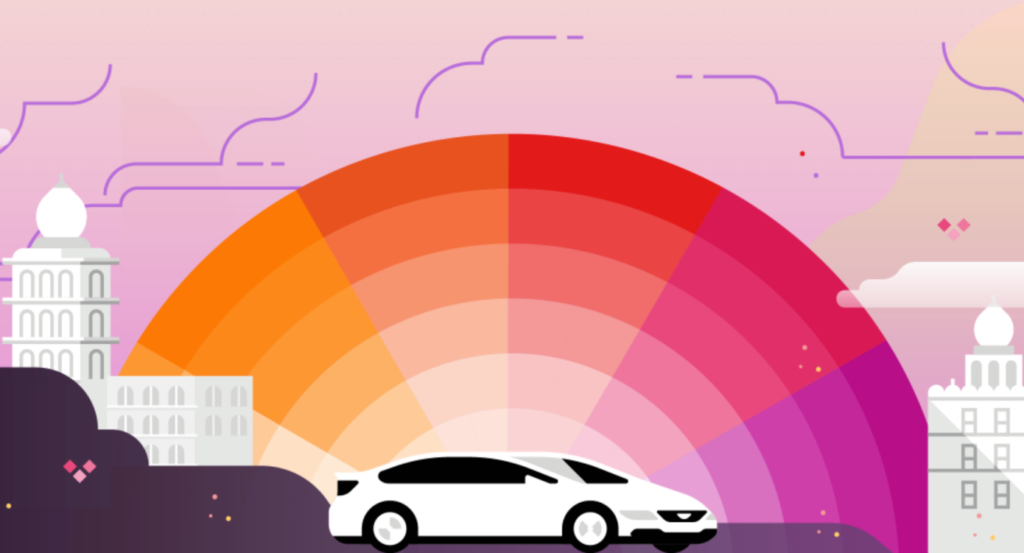
“The next hundreds of millions of riders for us are going to come from outside of the United States”, Uber’s head of rider experience Peter Deng tells me. The transportation giant already sees 75 million riders per month and 15 million rides per day. But to grow in the developing world, it had to rethink its app to work on the oldest phones and slowest networks. So Deng’s team traveled the globe asking people what they needed from Uber, but also what they didn’t.
The result is Uber Lite.
It’s launching today in India before rolling out to more countries, though there’s still a waitlist form instead of a download link. The Android app takes up just 5 megabytes. “You delete three selfies, you have room for Uber” Deng laughs. 300-millisecond response time means its quick to hail a ride, even for the 4 percent of users in India on sluggish 2G networks. And by streamlining the design and only showing maps by request, it won’t burn much data for users on a budget.
Uber needs to score growth in developing markets after retreating while cutting deals with local winner like Didi in China, Grab in Southeast Asia, and a forthcoming arrangement with Yandex in Russia. India’s Ola rideshare service already has a ‘Lite” app that’s just 1 megabyte and a 45% share of the taxi market, compared to Uber’s 35%. Uber has reported has talked with Ola about a possible merger in India, sources have told TechCrunch and others. With the country making up 10% of Uber’s rides, it’s a market it can’t forfeit.
To reach its full potential, Uber has to start out-competing homegrown competitors. Success with Uber Lite could give it leverage with Ola and path to gaining more of it around the world.
“We know we’re not just a U.S. company, we’re a global company. Not only have we built this for the world, it was built in India” Deng tells me. Deng came to Uber in March 2017 after 10 years at Facebook’s various companies. It was early to the “Lite” idea, with its shrunken app reaching over 200 million users.
But Deng says Uber Lite didn’t come from stripping down the main app, but building it up from scratch. “The team has traveled to markets around the world to do in home interviews to understand the needs of the customers.”
Compared to the 181 megabyte standard version, Uber Lite is a lot easier for low-storage phones to handle. Uber Lite launches not to a map or a text entry box, but instead a suggested nearby business or landmark based on your GPS. “You have to do less typing and can do more tapping” Deng explains. It also tries to guess your destination based on pre-cached popular city spots. You can input addresses, but Uber Lite won’t load a data-heavy map unless you purposefully grab for it. ‘Tap for map’.
Same goes for your driver’s ETA. After you’ve selected your vehicle type and hailed, you’ll just get a countdown to their arrival unless you tap to see them on their way. Payment for now is cash only. But soon Uber plans to add India’s popular Paytm payment platform and credit card options. It’s also still lacking notifications, which seem worth the data. More languages will come too.
Uber wouldn’t explain how, but it also revealed that it plans to offer offline hailing, possibly through some peer-to-peer Bluetooth mesh network or other technology. One other interesting test its running in India lets users punch in a code found at a bus stop to instantly hail a ride there. Another lets older or less phone savvy users phone in to an accessibility team that can hail a ride for them. It’s already offered web bookings. “The whole charter is to allow everyone around the world to experience Uber” Deng says.
What Uber wouldn’t skip in v1 was the in-app support and a way to share your ETA with loved ones so they can watch out for you. “We knew how important safety was in these markets. I’m really proud we took additional steps to empathize” Deng says.
The company is clearly trying to put the darker moments of its past behind it. While cynics might take the compassion talk as just lip service like the company’s big apology ad campaign, it’s also the reason some tech talent has stayed at or joined Uber. If the company is going to be unavoidable, making it secure and accessible is a pretty good reason to wake up in the morning.